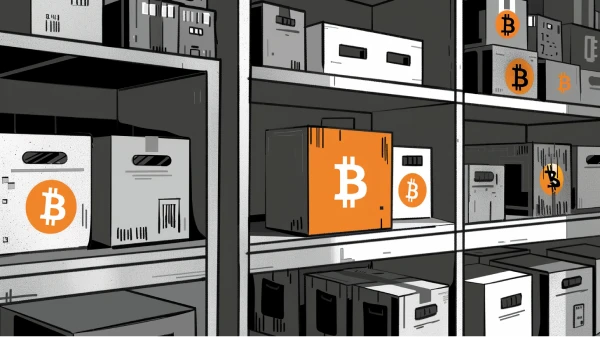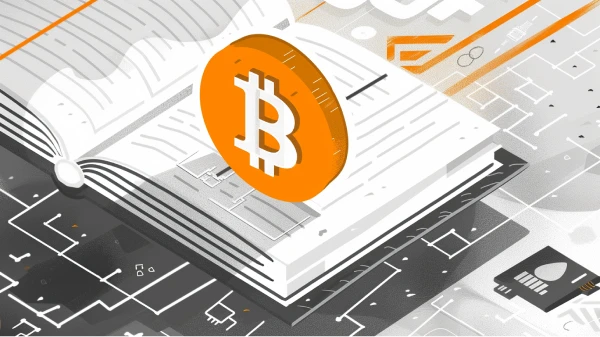Running your own Bitcoin node might sound complex, but it’s easier than you think and hugely beneficial. By setting up a node, you contribute to the network’s security, gain more privacy over your transactions, and get direct access to blockchain data. To start, you’ll need a computer with specific hardware requirements, download and install Bitcoin Core software, and configure your network settings. Once set up, your node will verify transactions and blocks, ensuring the integrity of the Bitcoin network. This guide will walk you through each step, making the process straightforward and accessible.
What Is a Bitcoin Node
A Bitcoin node is software that interacts with the Bitcoin network. The Bitcoin network is composed of nodes who communicate with one another, keep the blockchain up to date, and enforce the rules of the network.
➤ Learn more about why you should run a Bitcoin node.
Requirements and Costs for Running a Bitcoin Node
As with all software, Bitcoin software must be run on physical hardware, a computer. When you set up your Bitcoin node, you will need to choose the hardware and the software with which to run your node.
Bitcoin Node Hardware
First, you’ll need the right hardware. While you don’t need a supercomputer, a device with at least 2GB of RAM, a broadband internet connection, and at least 700 GB of free disk space is essential if you want to run a full node. If you are running a pruned or lightweight node, you will need at least 15 GB of free disk space.
Learn more about full nodes and lightweight nodes in our short video below.
Many enthusiasts use dedicated hardware like a Raspberry Pi for a low-cost, energy-efficient solution. Ensuring your device is always on and connected to the internet is crucial for optimal performance.
In order to maximize uptime, privacy, and security, many Bitcoin users choose to use dedicated hardware to run their Bitcoin node. The requirements for a dedicated hardware Bitcoin node are fairly cheap and easily accessible:
- A computer. Since this computer is meant for one task, it can be low-cost and simple. One of the most popular devices for Bitcoin nodes is the Raspberry Pi, a small computer, about the size of a human hand. A Raspberry Pi has enough processing power to operate a Bitcoin node and only costs about $50.
- Storage. You will need an external drive to have enough memory to store the entire blockchain. Solid State Drives (SSD) are faster and more durable but more expensive, than Hard Disk Drives (HDD). Currently, the blockchain takes up roughly 585 GB of space, but this will grow over time, so a 1 TB drive should be sufficient, and usually cost between $60 and $100 depending on size and quality.
Bitcoin Node Software
Secondly, download the Bitcoin Core software from the official Bitcoin website. This software is the backbone of your node, allowing you to interact directly with the Bitcoin network. The vast majority of Bitcoin nodes use Bitcoin Core, the reference implementation of Bitcoin. Several other high-quality implementations do exist, but unless you are experimenting to learn about Bitcoin in technical detail, you probably want to use Bitcoin Core.
Follow the installation instructions for your operating system. Once installed, you’ll need to configure the software. You can find detailed configuration options in the Bitcoin Core documentation.
➤ Learn more about Bitcoin implementations.
Setting Up a Bitcoin Node
Once your software is set up, you’ll start the process of downloading the Bitcoin blockchain. This can take several days as the blockchain is over 585 GB in size and growing. During this time, your node will verify every transaction and block, contributing to the network’s security and integrity. Ensure your internet connection can handle the data load, as this process requires substantial bandwidth.
Uptime and Bitcoin Nodes
After the blockchain is fully synced, your node will operate independently, validating transactions and blocks in real-time. To ensure continuous operation, make sure your device remains powered on and connected to the internet. Regularly check for software updates and install them to keep your node secure and efficient.
If possible, a Bitcoin node should always be online and maintain connections with peers. This will keep your node in sync with the rest of the network and ensure that you can always query your balances.
To allow a Bitcoin node to remain online at all times, many Bitcoin users dedicate a device solely to operating their Bitcoin node. This offers an additional security benefit if you are also storing funds in your node’s wallet or you are operating a Lightning node. However, the simplest way to run a Bitcoin node is to run it on a desktop or laptop computer.
Desktop Bitcoin Nodes
Several software packages allow you to easily download and install a Bitcoin node on your computer and run it in the background.
- Bitcoin Core. As the reference implementation of Bitcoin, Bitcoin Core software is widely used and well-tested. Bitcoin Core offers two software packages: Bitcoin-Qt comes with a visual app (GUI), while bitcoind is command line only. You can download either version from . Bitcoin Core comes with a wallet included in the software.
- Wasabi Wallet. Wasabi Wallet is a Bitcoin wallet that comes with the ability to run a node. Wasabi runs Bitcoin Knots, an alternative node implementation. While Bitcoin Knots and Bitcoin Core are different software, they are interoperable, meaning Bitcoin Knots nodes and Core nodes communicate and form a single network seamlessly.
Running a Bitcoin Node Is Easy
Many projects exist to help users run a Bitcoin node on small, affordable hardware. These companies release software packages, which will help you install a Bitcoin node without any technical knowledge. Most of these packages offer additional features, such as block explorers or wallets, built into the software as well. With these services, setting up a Bitcoin node is straightforward.
- myNode. MyNode offers free, open source software which allows users to easily install Bitcoin Core, Lightning, and many other Bitcoin applications, including Samourai Whirlpool and BTCPayServer. You can install myNode software on your Raspberry Pi or buy a fully set-up Pi and external hard drive directly from myNode.
- Umbrel. Umbrel also releases open source software, enabling users to easily launch a Bitcoin and Lightning Node. Umbrel also comes with a Bitcoin app store, allowing users to install other Bitcoin applications to bolster their privacy and security. Umbrel protects user privacy by using the Tor Network for all traffic.
- Nodl. The Nodl offers similar features as Umbrel and myNode, allowing users to run Bitcoin and Lightning Nodes with minimal technical knowledge.
Challenges of Running a Bitcoin Node
Running a Bitcoin node requires managing several key challenges:
- Resource Demands: Nodes must download and maintain the full Bitcoin blockchain and require stable internet, sufficient storage, and computing power.
- Legal Considerations: While generally legal, node operators may face regulatory concerns if they unknowingly relay illicit transactions or operate in regions with strict data laws.
- Maintenance: Nodes need regular updates, security management, and troubleshooting to ensure stability and performance.
Despite these challenges, operating a node enhances network security and empowers users with full transaction verification capabilities.
Notice: River does not provide investment, financial, tax, or legal advice. The information provided is general and illustrative in nature and therefore is not intended to provide, and should not be relied on for, tax advice. We encourage you to consult the appropriate tax professional to understand your personal tax circumstances.
Key Takeaways
- A Bitcoin node is software that interacts with the Bitcoin network.
- Running a Bitcoin node allows you to query your Bitcoin balance and interact with the Bitcoin network without trusting third parties.
- Many services offer software and hardware to make running a Bitcoin node as easy as possible.
- Many Bitcoin node packages also come with the ability to run a Lightning node.


